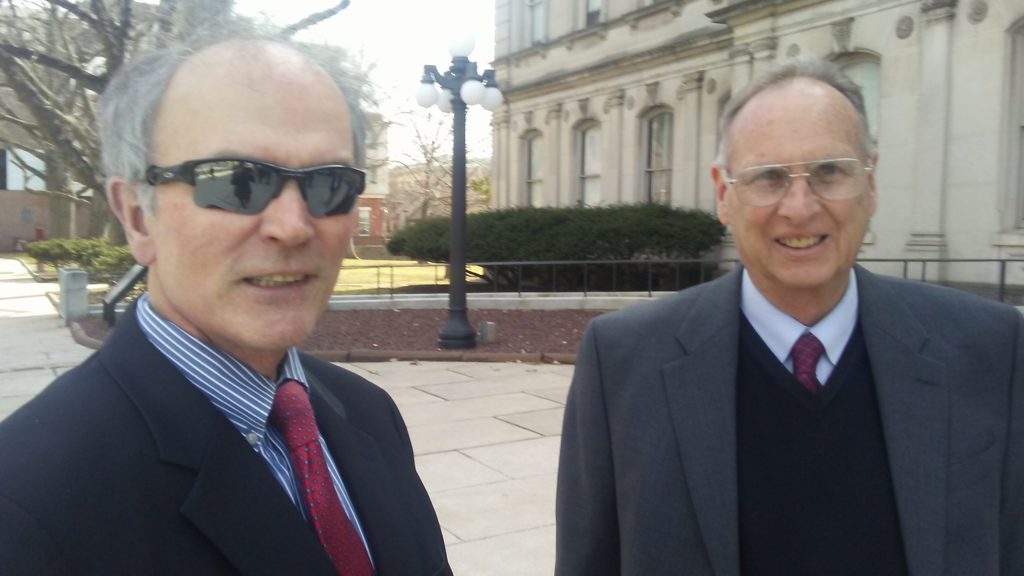Alaska Case No Threat to New Jersey’s Contribution Limits

A recent ruling by the U.S. Supreme Court highlights the wisdom behind New Jersey’s campaign finance law and its system of contribution limits. In David Thompson v. Heather Hebdon, the U.S. Supreme Court, in a recent opinion involving contribution limits, vacated and remanded back to the Ninth Circuit Court of Appeals a ruling by the lower court that upheld contribution limits in Alaska.
Alaska’s campaign finance law limits an individual to a $500 per year donation to a candidate or “election-oriented group other than a political party.” The annual contribution limit is the same as it was in 1996, 23 years ago.
By suggesting that Alaska’s limits are too low, the Supreme Court directed the Ninth Circuit to reconsider its ruling in light of its (Supreme Court’s) First Amendment precedent as established in Randall v. Sorrell.
In Randall v. Sorrell, 2006, the Supreme Court found Vermont’s contribution limits to be unconstitutional. Vermont had limited contributions made by individuals to $400 for governor, $300 for state Senate and $200 for state representative. The limits were imposed on a per election basis, not an annual basis as per Alaska.
Justice Breyer, in Randall, observed “contribution limits that are too low . . . harm the electoral process by preventing challengers from mounting effective campaigns against incumbent officeholders; thereby reducing democratic accountability.”
The Ninth Circuit ruled that Alaska’s law survived First Amendment scrutiny. In reaching this conclusion it stated that the individual contribution limit “focuses narrowly on the state’s interest, leaves the contributor free to affiliate with a candidate, and allows the candidate to amass sufficient resources to wage an effective campaign.”
By virtue of its ruling, the Ninth Circuit failed to apply the First Amendment precedent set forth by the Supreme Court in Randall v. Sorrell.
In response to the arguments made by the Ninth Circuit, the Supreme Court reiterated points made in its Randall decision.
First, the Court said that Alaska’s individual-to-candidate $500 limit was substantially lower than the limit of $1,075 previously held in Nixon v. Shrink Missouri Government PAC (2000). According to the Court if the Missouri limit was adjusted for inflation it would now be more than $1,600.
Second, the Court asserted that Alaska’s limit was “substantially lower than . . . comparable limits in other states,” and that most limits in other states were imposed on a per election rather than annual basis, making other state’s limits much higher.
Third, Alaska’s contribution limits are not adjusted for inflation. The Court had maintained in Randall that Vermont’s limits were already too low, its failure to account for inflation will “almost inevitably become too low over time.”
The opinion by the Supreme Court set off alarm bells for some in the reformist community who feared the decision foretold the Court’s intent to end contribution limits altogether.
Perhaps, however, the ruling suggests the opposite. There appears to be no suggestion in the Court’s per curium opinion that it intends to undue precedent vis-à-vis contribution limits but rather that it desires to have precedent upheld pursuant to its 2006 ruling in Randall v. Sorrell; and by extension Buckley v. Valeo (1976).
In Buckley, the Supreme Court opined “We find that, under the rigorous standards of review established by our prior decision, the weighty interests served by restricting the size of financial contributions to political candidates, are sufficient to justify the limited effect upon the First Amendment freedoms caused by the $1000 (federal) contribution ceiling.”
Regardless, the Supreme Court’s decision in Thompson augurs well for New Jersey’s campaign finance law and its contribution limit schedule.
By establishing limits on contributions in its 1993 reforms, the Legislature, in its wisdom, not only established non-gubernatorial limits that are high enough (now $2600) to withstand constitutional challenge but created a unique formula for adjusting gubernatorial limits and thresholds for inflation every four years.
The formula, which accounts for both advertising and consumer price inflation, was originated and subsequently proposed by the New Jersey Election Law Enforcement Commission (ELEC). The campaign index has served to ensure that the gubernatorial candidates that participate in the Gubernatorial Public Financing Program have enough money to run effective campaigns.
While the Commission has advocated raising non-gubernatorial contribution limits to adjust for inflation, the Legislature has yet to take up the proposal despite the limits remaining stagnant for several election cycles. Nevertheless, the existing non-gubernatorial contribution limits are sufficient to satisfy guidelines suggested by the U.S. Supreme Court in its recent ruling involving Alaska’s contribution limit plan.
Jeff Brindle is the Executive Director of the New Jersey Election Law Enforcement Commission.
The opinions presented here are his own and not necessarily those of the Commission.





